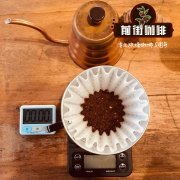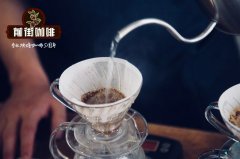Arabica and Robusta: which coffee beans are best for you?

Professional coffee knowledge exchange more coffee bean information please follow the coffee workshop (Wechat official account cafe_style)
There are thousands of varieties of coffee there, but only two stand out in quality and boost the economy of the industry, Arabica and robusta coffee or Arabica coffee and robusta coffee if you like.
60% of the world's coffee is Arabica coffee, which is mainly grown in North America, while Robusta coffee, which is mainly grown in Africa and Asia, accounts for the remaining 40%.
Which is better?
Most of the coffee world supports Arabica coffee, and the numbers prove this, but this does not mean that coffee robusta coffee is not a coffee that can be checked.
Years of effective marketing by Arabica manufacturers is part of the reason for the difference, so phrases like 100% Arabica will boost sales and dirty and bitter Robusta marketing.
The real picture tells the true story that different planting, harvesting, processing and roasting techniques do affect the final quality and flavor of coffee.
It is not surprising that the areas that dominate robusta coffee cultivation are countries with less mechanized agricultural activities, so these factors may be affected.
In addition, many of the bitter Robusta flavors come not from the beans themselves, but from industry standards, allowing Robusta to have a large number of black sour beans with other defects.
These standards are different for Arabica, so you will find many high-quality products and few high-quality Robusta products.
Robusta, also known as coffee canephora, has many differences from Arabica coffee.
Origin and distribution
Robusta has been considered an ugly version of Arabica for some time, but studies have shown that Arabica is actually a mutant form of Robusta.
The crossover with Robusta's coffee euginoides produced Arabica coffee.
The mixture of Arabica and Robusta is very common in the market for the simple reason that it is more expensive to grow Arabica coffee, so many roasters will increase Robusta to reduce prices and make more profits.
That's why 100% Arabica coffee is a thing, because it's for people who don't mind paying more for sweeter coffee.
Coffee factory
The average coffee can be trimmed to about 5 feet high, making manual picking the most effective way to separate mature and immature coffee.
Robusta can reach 40 feet high, while Mount Arabica can only reach 14 feet.
Robusta will produce a higher output than its counterpart and can be identified as the smaller of the two, with a straight line crease cut into the midpoint.
Compared with robusta caffeine, Arabica caffeine contains more caffeine than robusta caffeine, with a caffeine content of 0.8-1.4%.
This difference in caffeine content can affect taste. Caffeinated Robusta is famous for its rubber taste, while Arabica coffee, which contains less than half of the caffeine, is a delicious coffee bean.
Arabica coffee also contains more lipids and sugars.
Environment
All coffee plants survive best in mild climates with little change in temperature. Vulnerability increases mainly with lower temperatures, so very cool temperatures can kill large numbers of people more quickly.
Any substance in the range of 20-30 °C can be considered the best temperature for Robusta, and 15-25 °C is good for Arabica coffee. For the former, 2000-3000mm rainfall is perfect, while the latter is 1500-2500mm rainfall.
Arabica grows at a height of 9-2000 meters and has little resistance to diseases and insect pests, so preventive measures are emphasized in the process of cultivation, while the height of 0-0000 meters is perfect for Robsta, which has greater resistance to diseases and insect pests.
Robusta caffeine contains high caffeine as a chemical barrier against coffee insects because the bitterness they produce drives them away.
The content of chlorogenic acid is another factor of pest resistance, and the content of Robusta is higher.
There, you need to know every important detail of the two most popular coffee varieties on the market. If you prefer, you can try any of them or a mixture of both.
END
Important Notice :
前街咖啡 FrontStreet Coffee has moved to new addredd:
FrontStreet Coffee Address: 315,Donghua East Road,GuangZhou
Tel:020 38364473
- Prev

What are the local conditions? How will coffee be affected under these conditions?
Professional coffee knowledge exchange more coffee bean information please follow the coffee workshop (Wechat official account cafe_style) We often hear the word "local conditions" when talking about coffee, but what exactly does "local" mean? Does it have anything to do with the flavor of coffee? Why do we need to care about the local environment? The author interviewed some people in the coffee industry and wine industry and asked them to tell you how the local culture is.
- Next

Costa Rican Dota (Coopedota) Coffee Cooperative introduces Costa Rican coffee
Professional coffee knowledge exchange more coffee bean information please follow the coffee workshop (Wechat official account cafe_style) Costa Rica's seven main coffee producing areas are distributed from northwest to southeast along with the inland central plateau. The fertile volcanic ash, mild and suitable temperature, and stable and abundant rainfall in Costa Rican volcanic terrain are all factors that make coffee a major agricultural product in Costa Rica.
Related
- Does Rose Summer choose Blue, Green or Red? Detailed explanation of Rose Summer Coffee plots and Classification in Panamanian Jade Manor
- What is the difference between the origin, producing area, processing plant, cooperative and manor of coffee beans?
- How fine does the espresso powder fit? how to grind the espresso?
- Sca coffee roasting degree color card coffee roasting degree 8 roasting color values what do you mean?
- The practice of lattes: how to make lattes at home
- Introduction to Indonesian Fine Coffee beans-- Java Coffee producing area of Indonesian Arabica Coffee
- How much will the flavor of light and medium roasted rose summer be expressed? What baking level is rose summer suitable for?
- Introduction to the characteristics of washing, sun-drying or wet-planing coffee commonly used in Mantenin, Indonesia
- Price characteristics of Arabica Coffee Bean Starbucks introduction to Manning Coffee Bean Taste producing area Variety Manor
- What is the authentic Yega flavor? What are the flavor characteristics of the really excellent Yejasuffi coffee beans?

